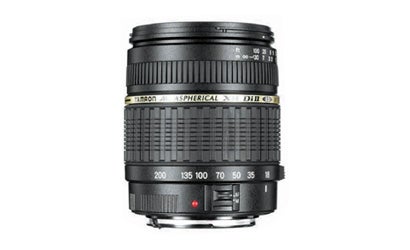Which Lens Should I Buy?
How to pick the best lightweight, compact, multipurpose superzoom for travel -- at the right price.

We may earn revenue from the products available on this page and participate in affiliate programs. Learn more ›
A reader writes: My Canon EOS Digital rebel XT and I will be vacationing in China over the holidays. I’d like to take only one lens, and am especially interested in landscapes and close-ups (of food and calligraphy). I have serious budget and space limitations. Any suggestions?
In your shoes, we would get one of today’s ultralight, ultracompact superzooms. With generous 11X zoom ranges and very reasonable pricing, 18-200mm f/3.5-6.3 digital-only superzooms from the independent lensmakers Sigma and Tamron are the obvious choices. (Canon itself makes an excellent 17-85mm f/4-5.6 image-stabilized zoom, but it has neither the zoom range nor the pricing for you.)
At first glance, you might think the Sigma and Tamron were the same lens. At comparable street prices ($379 and $389, respectively), they have identical focal lengths, maximum apertures, and filter sizes, similar weights, and similar Pop Photo Lab SQF and distortion test results. On closer inspection, however, significant differences arise, and one of these differences could go a long way to improving those close-ups of Chinese food and calligraphy.
In our Lab tests, the Tamron 18-200mm f/3.5-6.3 XR Di II LD Macro showed considerably more magnifying power than the Sigma superzoom (1:3.7 vs. 1:4.5, both at 200mm). The Tamron will, therefore, get you in much tighter for better detail and in-your-face immediacy for those close-up shots.
As for your other main subject, landscapes, the Tamron (a 27-300mm 35mm equivalent) should come through with flying colors. Its sharpness and contrast as measured by our SQF tests were in the Excellent range for three out of four tested focal lengths. Only at 200mm did it drop into the Good range, very common for this breed of lens.
Physically, the Tamron should fit the bill, with a very compact retracted size (3.38 inches) and an overall weight of about 15 ounces. Pretty amazing, when you consider it’s taking you all the way out to the 35mm equivalent of 300mm.